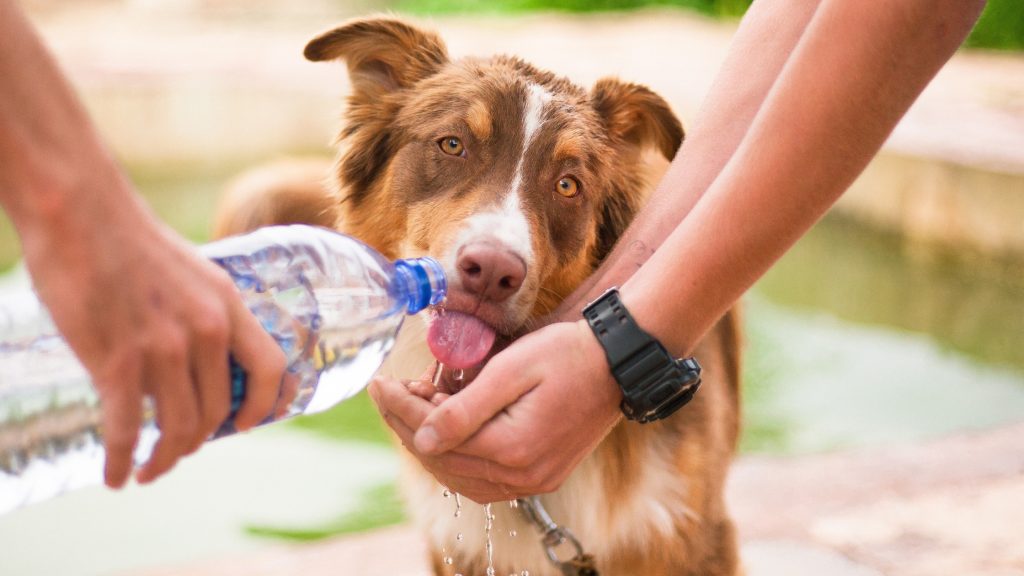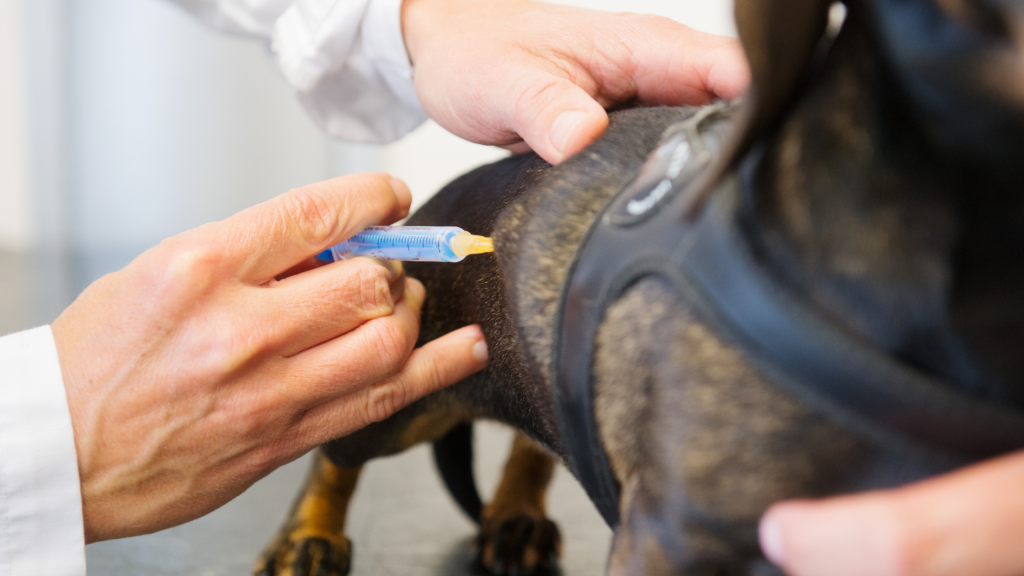Canine diabetes, also known as canine diabetes mellitus or canine diabetes, is an increasingly common chronic disease that affects a dog’s ability to use insulin. It is a serious health condition that can significantly affect a dog’s quality of life.
With proper diagnosis and treatment, affected dogs can live long and fulfilling lives, so it is important to know the main symptoms of the disease, possible causes, treatment methods, and prevention principles.
Table of contents
Diabetes in dogs: what is it and why does it occur?
Diabetes mellitus in dogs occurs when the pancreas no longer produces enough insulin or when the body becomes resistant to it. Insulin is necessary for glucose to enter cells from the blood and be used as a source of energy.
When insulin production is disrupted or does not work as it should, glucose remains in the blood and begins to accumulate. This causes various health problems and can damage organs over time.
There are several key factors that can lead to the development of diabetes in dogs:
- Overweight and obesity. This is one of the main risk factors that causes dogs to become insulin resistant and develop diabetes.
- Genetic predisposition. Some dog breeds, such as Beagles, Labradors, Dachshunds, Scottish Terriers, and some others, are more prone to developing canine diabetes.
- Age. Dogs older than seven years of age are at greater risk of developing diabetes, especially if they are overweight.
- Hormonal disorders. For example, Cushing’s syndrome or hyperestrogenism can contribute to the development of diabetes in dogs.
- Poor diet. An inadequate or poor diet, especially one that is high in carbohydrates, can disrupt a dog’s metabolism and cause symptoms of diabetes.
By understanding what causes diabetes in dogs, you can take preventive measures or spot the first symptoms in time.

Symptoms of diabetes in dogs: what is important to notice?
Diabetes in dogs may develop imperceptibly at first, but there are certain signs that every owner should recognize.
By noticing the symptoms of diabetes in dogs early on, serious complications—from cataracts to kidney damage—can be avoided. Below are the most common signs of the disease.
- Increased thirst and frequent urination. These symptoms are usually the first to appear and are not related to urinary incontinence in dogs. This can be so pronounced that the pet starts urinating in the house or gets up at night to go outside.
- Weight loss despite normal or increased appetite. If your dog is eating the same amount or even more than before but is still losing weight, this is a serious sign. The body is unable to use the energy from food because glucose cannot enter the cells due to insulin dysfunction.
- Lack of energy and lethargy. Dogs with diabetes often appear tired, sleep more, and are less interested in playing or going for walks. Lack of energy is one of the signs of glucose not being utilized.
- Eye cloudiness or cataracts. One of the most common complications of diabetes in dogs is cloudiness in the eyes, which can later develop into cataracts and cause vision problems or blindness.
- Sweet or fruity smell from the nostrils. A specific mouth odor (like sweet or fruity) often occurs when there is an increased amount of ketones in the blood. This is one of the signs that the body has started to use fat instead of glucose for energy.
Early recognition of the signs of diabetes in dogs can help prevent dangerous complications and ensure effective treatment.

How is diabetes mellitus diagnosed in dogs?
To accurately determine whether a dog has diabetes, a professional veterinary examination and laboratory tests are necessary. Diabetes in dogs can manifest itself in various symptoms, but only tests can confirm the diagnosis and allow appropriate treatment to begin.
The following diagnostic methods are most commonly used:
- Blood tests. The glucose level in the blood is determined. If it is elevated, this is one of the main signs of diabetes. Blood tests also help to assess the overall health of the dog and rule out other diseases.
- Urine tests. Glucose or ketones are often found in the urine of dogs with diabetes. The test helps not only to diagnose the disease, but also to assess kidney function.
- Additional internal organ tests. In some cases, echocardiography, X-rays, or other instrumental tests are performed to identify possible concomitant diseases or to assess the dog’s condition in more detail.
Diagnosis is an essential step in ensuring that your dog receives proper treatment and care. The earlier the disease is detected, the easier it is to manage.
How is diabetes treated in dogs?
The treatment of diabetes mellitus in dogs is a long-term process that requires consistency and patience. Although the disease is incurable, it can be successfully controlled to ensure a good quality of life for your dog. The appropriate treatment is always selected on an individual basis, taking into account the dog’s health, age, weight, and other factors. Below, we will discuss the main methods of treating diabetes in dogs.
Insulin therapy
This is the primary and most important method of treating diabetes in dogs. The veterinarian prescribes an individual insulin dose for each dog, taking into account its weight, age, and the course of the disease.
Injections are usually given daily at the same time, so it is very important to stick to the schedule. Although it may seem complicated at first, most owners quickly learn how to perform this procedure at home.

Special diet
A balanced diet is just as important as insulin injections. Dogs with diabetes are recommended to eat foods that are lower in carbohydrates and higher in fiber, as this helps prevent sudden spikes in blood glucose levels.
Veterinarians often recommend therapeutic diets produced by specialized feed manufacturers. Regular feeding times and consistent portion sizes are another important aspect of maintaining your dog’s health.
Physical activity
Regular physical activity is an important part of controlling diabetes in dogs. Exercise helps maintain optimal weight, improves insulin sensitivity, and helps the body use glucose more efficiently.
It is important that physical activity is consistent and moderate. Sudden or overly intense exercise can have the opposite effect. It is best to take walks at the same time every day. It is also necessary to monitor how the dog feels after activity. If you notice lethargy or weakness, it is worth consulting with your veterinarian about adjustments to the regimen.

Regular health checks
For treatment to be effective, regular visits to the veterinarian are necessary. During checkups, blood glucose levels are monitored, and the dog’s weight, energy levels, and overall health are assessed. It may be necessary to adjust the insulin dose or diet. In addition, preventive examinations allow for the timely detection of possible complications, such as cataracts or kidney damage.
The success of treatment depends greatly on the owner’s responsibility – the more closely the veterinarian’s instructions are followed, the more stable the dog’s condition and the longer and better its quality of life.
How to prevent diabetes in dogs?
Although dog diabetes cannot always be prevented, especially if it is caused by genetics or age, many risk factors can be controlled. A responsible approach to your pet’s diet, physical activity, and health care can help reduce the likelihood of the disease or delay its onset.
Basic principles of prevention:
- Maintain a normal weight. Obesity is one of the main factors that increase the risk of diabetes in dogs. Proper nutrition and regular exercise help maintain a healthy body weight.
- Choose high-quality, balanced food. Food should be tailored to your dog’s age, size, and activity level. Avoid too many carbohydrates and low-quality products, as these can disrupt metabolism. Proper nutrition and a balanced diet ensure that your dog gets all the nutrients it needs to maintain a healthy and proper metabolism.
- Visit your veterinarian regularly. Preventive checkups help detect health changes early and take action in a timely manner. Your veterinarian can also advise you on proper nutrition and lifestyle.
- Observe your dog’s behavior. Changes such as increased thirst, appetite, or lethargy may be the first warning signs. The sooner you respond, the better the prognosis will be.
Simple but consistent daily decisions can significantly reduce the risk of diabetes and help your dog stay healthy and energetic for many years to come.

Take care of your dog’s health
Diabetes mellitus in dogs is a serious but manageable disease. By noticing the symptoms in time, consulting a veterinarian, and following a treatment plan, you can ensure that your dog will live a long, active, and fulfilling life.
The most important thing is to monitor your pet’s condition, choose a high-quality diet, maintain a healthy weight, and remember to take them for regular check-ups. The sooner you notice changes, the more likely you are to avoid serious complications.
The Begemotas veterinary clinic in Vilnius and Širvintos provides professional assistance to dogs suffering from diabetes mellitus: from accurate diagnosis to an individually tailored treatment plan. If you have noticed possible signs of the disease or would like to consult about prevention, please register for an appointment.





